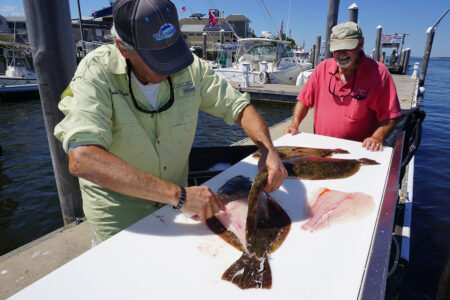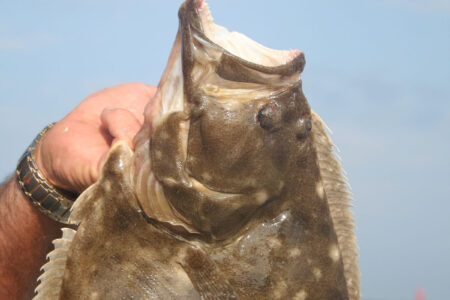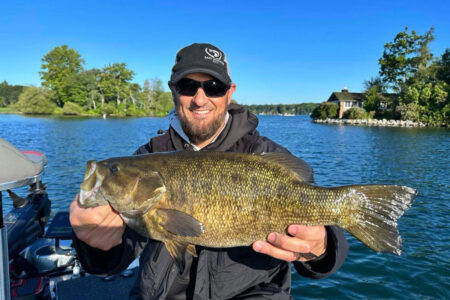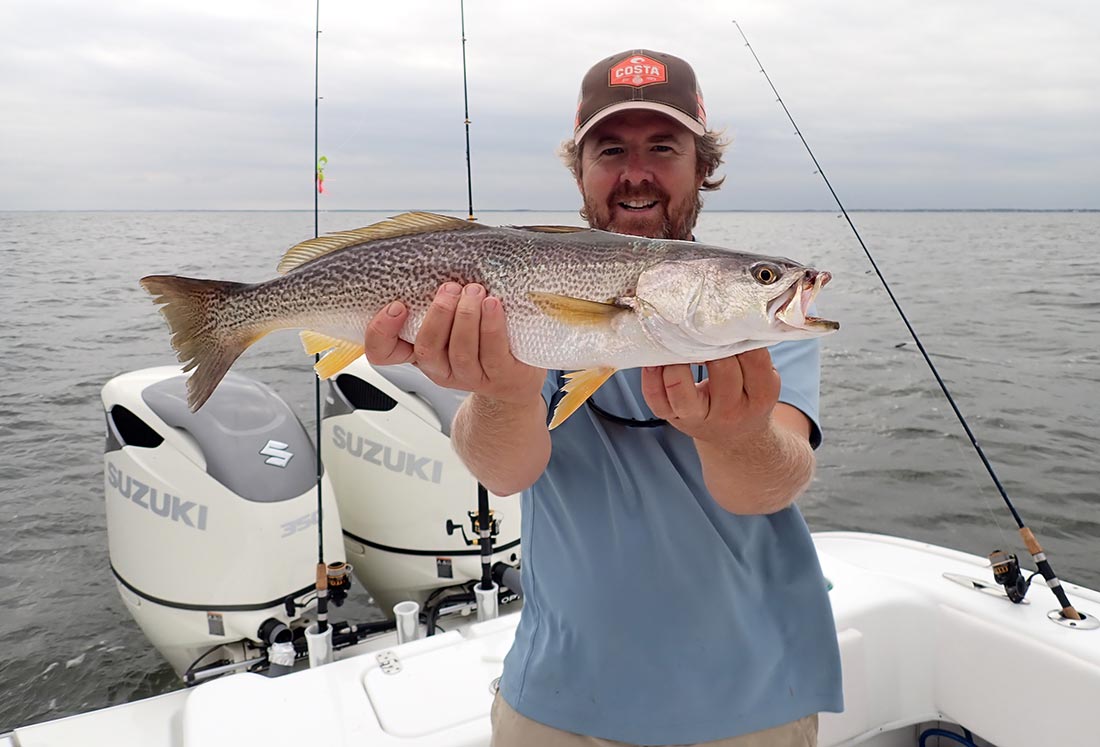
After a banner season in 2019, anticipation runs high for a repeat performance by the unpredictable yellowfins.
Last season’s run of weakfish in Great South Bay bore shades of the fantastic fishing many of us enjoyed during the banner years of the 1970s. Catches of 50 or more fish were not uncommon for those wise in the ways of weakfishing, and having five or six fish follow a hooked fish to the boat was also reminiscent of years gone by. Surprisingly, not a lot of anglers took advantage of this great action that spanned several months in the relatively protected confines of the bay. I would hate to think that the one fish bag limit deterred people from enjoying some of the best light tackle fishing available in our waters. Or maybe as a friend reminded me, most of the people fishing these waters today were not around during those glory years – many have probably never seen, let alone caught a weakfish. I’d like to think that is a better explanation and one that is easy to correct.
Beginning in late April (the earliest I ever caught weakfish in the bay was April 17), but more often the first week of May, the bay’s mainland creeks and marina docks, the State Boat Channel, the waters stretching from Ocean Beach to Point O’Woods, West Channel, the Heckscher flats and East and Range channels offer the potential for some good weakfish action. In the past, May was the peak of the run with not only big numbers, but many quality tiderunners making up the action. Mainland creeks and docks would host some really big weaks in the early going with 10 to 12 pounders not uncommon between dusk and dawn. My best from the docks was a 14-plus pounder that ate a 4-inch Fin-S-Fish right up against the bulkhead where it was sucking down mouthfuls of grass shrimp. By mid-May those big spawners would move out into the bay. Unfortunately, the current fishery contains very few big weaks, with a 5 pounder considered a good one these days. If last year’s abundance wasn’t an anomaly and we are in fact entering a new cycle of abundance, each year should see increasingly larger fish making up the fishery. I would love to see that for all of you who missed out on that last great stretch of weakfishing.
Last season saw the really good action start later in the season but it carried through the summer and into the fall, with very good fishing in mid-bay areas off of Heckscher, Sayville and Bayport, along with many of the aforementioned areas and docks. Kayakers should not overlook the potential of mainland creeks and near shore areas on the north side of the bay. Working dock lights after dark from a kayak would seem like an excellent opportunity to score with weaks and/or stripers in calm waters that are pretty much sheltered from most winds.
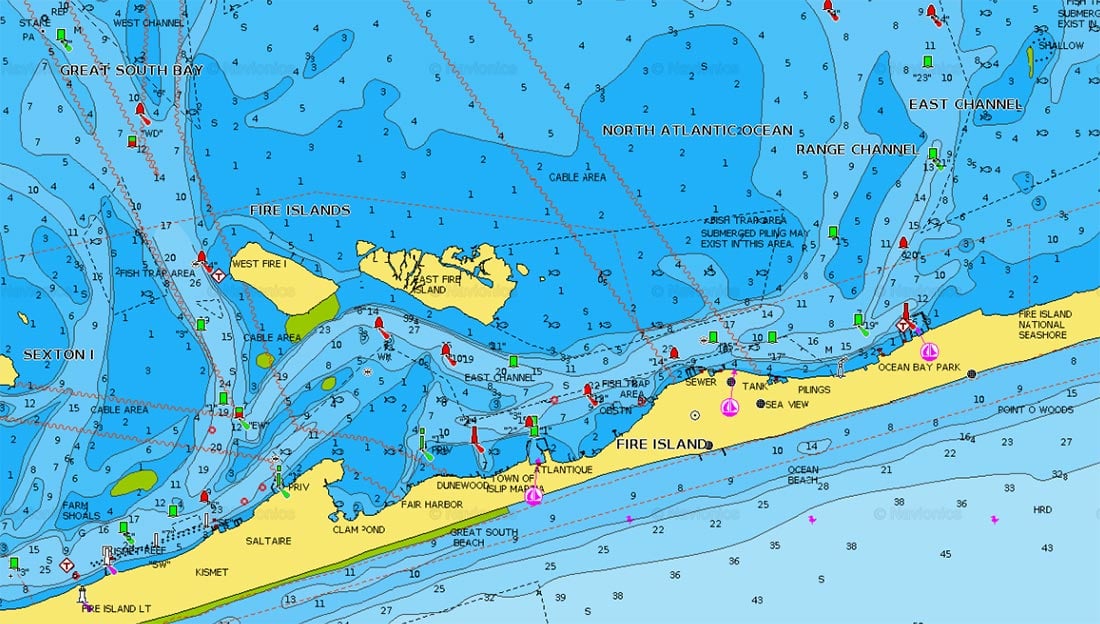
Light tackle is the only way to go where weakfish are concerned. You will catch more fish and have more fun doing it, plain and simple. Perceptions of what defines light tackle differ greatly so let me say that a 7-foot medium/light action rod with a 4000 series real spooled with 20-pound braid is not light tackle where weakfish are concerned. A light to medium/light action spinning rod of 6 or 6-1/2 feet, matched to a 2500 or 3000 series reel and spooled with no more than 10-pound test braid is the perfect tool for weakfishing in the bay. Top off your braid with four feet of 20-pound fluorocarbon leader joined by a double-uni, modified Albright or FG knot, and you’re set to go. At the terminal end, I prefer to tie direct to bucktails and leadheads, but you can go to a snap for metals and plugs. For light tackle fishing, I still prefer Duo-Lock snaps for their lower profile, over the bulkier and stronger quick clips.
If you have never targeted weakfish before, it cannot get any easier. One of the endearing traits of weakfish is that they will readily strike a wide assortment of baits and artificials. Back in the 70s while running light tackle charters, small white bucktails from 3/16 to ½ ounce were all the ammo I ever needed for fishing the flats off Heckscher and around East Island. Fished naked, they were a perfect match for the shrimp the yellowfins were gorging on in the spring. That was also the era of the Salty Dog shrimp and is probably what 90 percent of anglers relied on for weakfish. Later in the decade, jelly worms also became a popular weapon for weaks.
These lures still remain effective tools, but other soft plastics in the form of Gulp, Bass Assassins, Fin-S-Fish and more recently, FishBites have taken over the limelight. I fished the Dirty Boxer curly tail from FishBites extensively last season and was amazed at how effective they were on not only weakfish, but fluke as well, and it takes a lot to amaze me. Your arsenal can be kept pretty basic. In addition to a few types of soft plastics, bucktails are an absolute must and can range anywhere from 3/16 of an ounce to 1-ounce. A good selection of jig heads in the same weight range should also be in your box. A couple of small metals like the Hopkins Shorty make a good addition especially if there are peanut bunker around. Four to five-inch swimming plugs can also be effective in quiet back-bay waters. For the most part, you will rarely have to go beyond your soft plastic and bucktails, but it never hurts to be prepared. There was a stretch back in the 70s when the weaks would get fussy near the end of May and were hanging in deeper water areas like West Channel, Ocean Beach and along South Beach. Sinking mackerel finished Rebels turned out to be the answer for those 7 to 12 pound tiderunners.
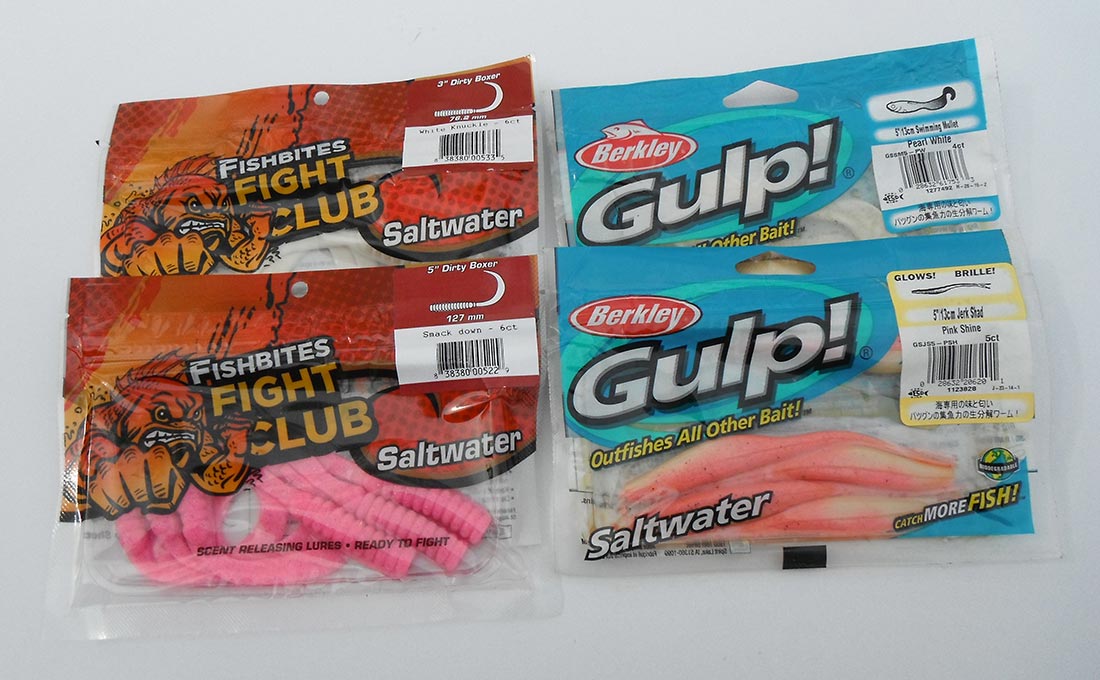
For fishing the mainland creeks, keep in mind that downsizing your offerings is almost always the better choice, while fishing deeper water with current, you will want to lean toward the upper end. Even in deep water with strong current, you should never have to exceed an ounce, and in most cases ½ to ¾ will get the job done. Ten-pound braid has the diameter of 4-pound test mono and offers minimal water resistance which helps get your lure down in the zone and keep it there. The biggest factor however is how you present it. When drifting in a boat or kayak, the last thing you want to do is drag your lure or cast it in your wake. The resistance created by the movement of your boat will cause your offering to rise up away from the bottom, and necessitate the use of a heavier payload to keep it down. The best approach is to cast directly or angled into the direction of your drift, depending on how fast you are drifting. Reel just fast enough to keep the slack out of your line and to maintain contact with your lure. This will ensure your lure is working slowly along the bottom in the feeding zone.
The deeper channels on the south side of the bay running along Point O’ Woods, Ocean Beach and west to the Fire Island Lighthouse, along with West Channel, tend to draw a crowd. That’s especially true for Ocean Beach. You will do much better avoiding areas with heavy boat traffic, which includes the never ending parade of Fire Island ferries in this area. If you plan on targeting these areas, try to fish them very early or late to avoid the boat traffic which will put weakfish off their feed. A good fishfinder is worth its weight in gold when it comes to finding schools of weakfish in deeper water.
So here’s hoping that the weakies return in abundance this season. Spend some time targeting them and you will quickly understand why so many “oldtimers” continue to relive the great weakfish years of the 70s and early 80s.
